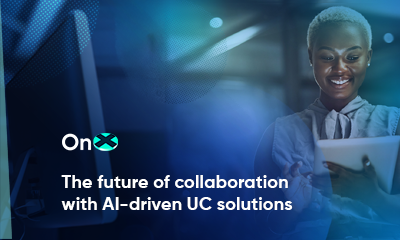
In recent years, businesses have been forced to speed up IT transformation strategies to meet changing consumer habits and demands. For example, many companies have pivoted to new business models, products, and hybrid work models to keep pace with competitors. But a core obstacle to effective digital transformation is aging legacy technology, applications, and infrastructure, which must be modernized to keep up with expanded dataflow and network speeds.
Modernization of legacy technology enhances application development speed, functionality, and uptime through modern cloud methodologies, platforms, systems, and frameworks. Migrating a legacy application to the Cloud enables cloud-native tools such as microservices or containers. Another example of modernization might be the movement of on-premises data centers to a cloud-based data storage solution.
In this post, we will closely examine the implications of legacy technology modernization and how companies can take advantage of the process to encourage growth.
The need for legacy technology modernization
Since the beginning of the pandemic, many companies have shifted to a hybrid workforce environment. As a result, many businesses accelerated and adapted existing IT transformation plans. According to a McKinsey survey, organizations are implementing digital strategies approximately 20-25 times faster than previously anticipated. In addition, many companies are going several steps beyond by upgrading to modern networks. This aspect of modernization will not only update legacy applications but help businesses keep up with increasingly data-heavy applications.
Many companies have substantial investments in application development—both in terms of finances and operations. In IT, the term “legacy” may have undesirable associations with applications, systems, and infrastructure. Still, these technologies are often at the core of operations. Additionally, most organizations are hesitant to phase out legacy applications due to the sheer expense of finding a suitable replacement and the threat of lost productivity or system downtime. Modernizing legacy infrastructure is the most reasonable and affordable solution for companies seeking to maintain and upgrade mission-critical technologies.
Application and infrastructure modernization allows companies of all sizes to stay competitive while reducing costs and offering a customized digital experience to their customers.
Also read: Cloud-enabled security from OnX enhances your critical business applications
Examples of technology modernization
Technological innovations that are fueling the modernization effort include:
- Cloud-native app development. Developing applications in cloud environments allows for speedy development, updates, and the standardization of operating systems.
- Containers. Containers create highly portable programming environments that reduce the reliance on underlying infrastructure and systems.
- API integrations. Lightweight API code helps integrate applications in upstream and downstream system chains.
- DevOps/SecOps. Cloud-first development methodologies accelerate time to market by using automation.
- Artificial intelligence and machine learning insights. AI and ML analyze data to generate actionable real-time insights.
Approaches to successful IT modernization
Lift and shift (aka rehosting)
Lift and shift migrates an existing legacy app to a cloud-based environment. This approach moves or “lifts” the application to a new infrastructure without radically changing the core code of the app.
Re-factoring
Re-factoring uses the opposite strategy of lift and shift. Re-factoring “rebuilds” the base code of a legacy application to optimize it for cloud environments. While this tactic requires more effort, re-factoring has the added advantage of breaking up the code of an application into smaller microservices that can run independently and on demand. Developers can then utilize these microservices to boost efficiency with other cloud-based tools such as orchestration, automation, and containers.
Re-platforming
A hybrid of the above two strategies, re-platforming does not require extensive coding changes. Instead, developers make changes to an application’s backend programming to optimize it for a cloud platform.
Read more: Why the Cloud is your key to application evolution
Core technologies driving transformation
Legacy systems modernization breaks down the separation between hardware and software to create a more fluid infrastructure. As such, there are several related, emerging technologies driving IT transformation.
Cloud computing
The Cloud is a critical driver of legacy systems modernization. By migrating an application or set of business functions to cloud-based environments, companies benefit from greater speeds, reliability, and functionality. These cloud environments include various platforms, clouds, or multi-clouds. A good example is the disaster recovery and data protection services offered through Microsoft Azure or a similar service. By migrating data storage to Azure, a company sets up a reliable emergency measure that protects and secures data.
Containerization
Containers are a cloud-first technique that is highly scalable and portable. Containers are environments that deploy, package, and operate various application workloads. Containerization improves efficiency by moving applications or microservices to the Cloud or multi-cloud environment best suited for the current task.
Microservices
Microservices are “chunks” of code dedicated to a task or several tasks. Microservices break up the traditional codebase into independent, Internet-accessible standards. By using microservices, developers can access thousands of separate coding components on demand on a cloud platform. Each microservice functions independently of the others and can be updated, deployed, or run individually, as needed.
Automation and orchestration
Software orchestration is a type of automation that works with containers, managing deployment, network functionality, and scalability across cloud environments. Other types of automation help developers manage applications at scale and assure efficiency across development stages, operations, and security.
Read more: The evolution of modern computing: serverless solutions versus containers
Work with an outside consultant for IT modernization
As we’ve discussed, digital transformation is vitally essential for the continued growth and success of modern companies. But managing the legacy technology modernization process can be overwhelming for already overtaxed IT departments. Seeking expert assistance in IT transformation can supercharge modernization efforts.
The OnX team of project managers and software engineers is deeply experienced in modernizing legacy technology. They have the know-how to help you future-proof your business operations by fully utilizing cloud technology through a vetted process.
Further offload IT burden and free up your team and resources by investing in a fully managed service such as NaaS, UCaaS, or managed security.
Get in touch to learn more about how OnX can guide you through the IT transformation journey.














